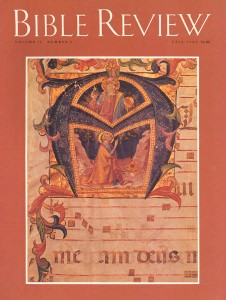Explaining the Identical Lines at the End of Chronicles and the Beginning of Ezra

Scholars know it, but most lay people don’t. The first two and a half verses of the Book of Ezra (Ezra 1:1–3a) are identical to the last two verses of the second Book of Chronicles (2 Chronicles 36:22–23).
These repeated verses at the end of Chronicles are called “catch-lines.” In ancient times, catch-lines were often placed at the end of a scroll to facilitate the reader’s passing on to the correct second book-scroll after completing the first. This scribal device was employed in works that exceeded the scope of a single scroll and had to be continued on another scroll.
In Mesopotamia, where writing was on clay tablets rather than scrolls, when a work extended over several tablets, the scribe meticulously inserted catch-lines at the ends of the completed tablet that would lead the reader to the next tablet.
The catch-lines that connect Chronicles with Ezra are decisive evidence of the compositional connection between the two works. It is generally recognized among scholars that the two books of Chronicles (originally, one, uninterrupted book) and the Book of Ezra/Nehemiah are the work of a single author, who is often referred to as the Chronicler.a The four (actually two) books together are sometimes called the Chronistic Work.
Already a library member? Log in here.
Institution user? Log in with your IP address.

